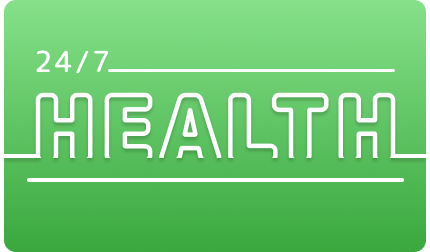In his darkest moments, Jason Hall felt worthless. During his childhood and early adulthood, he said, there were times when he would drink too much alcohol, pop pills at nightclubs and, inevitably, do something or say something that would hurt people he loved.
Hall, 41, would never have thought that his life journey would take him from those dark experiences to potentially saving lives with his work refilling naloxone vending machines across Oklahoma.
Over-the-counter naloxone, known by the brand name Narcan, is an inhaled medication used to reverse an opioid overdose while it’s happening. Naloxone vending machines – which provide the medications for free – can help people access doses quickly and reduce someone’s risk of dying from an opioid overdose since, ideally, the medication should be given immediately.
The vending machines also offer free fentanyl test strips, small strips of paper that can test drugs for the presence of fentanyl, a powerful synthetic opioid that drives most overdose deaths in the United States.
From California to New York, vending machines stocked with harm-reduction tools have been placed in areas where high numbers of opioid overdoses have been reported.
In Oklahoma, some of the machines are located along turnpikes, in casinos, on university campuses, at a library or outside fire stations.
The size of these programs can vary. Oklahoma plans to expand its program this year from 27 machines to 40. Other large programs can be found in places like Michigan, where Wayne County officials announced last month plans to deploy 100 vending machines containing naloxone.
When working with the vending machines in Oklahoma, Hall often reflects on his experiences to inform his work. As a senior field representative for harm reduction campaigns at the Oklahoma Department of Mental Health and Substance Abuse Services, he leads community training sessions on harm reduction as well as helping restock dozens of naloxone vending machines for people to access anonymously.
“People’s reasons for using substances are as vast and different as there are different types of suffering. I grew up as a queer kid in a small town, and it was not a super cool thing to be in the ‘80s and ‘90s,” said Hall, who is based in Oklahoma City. “You’re basically told from a very, very young age that this is kind of the worst thing that you can be. You internalize that, and it creates a lot of depression and anxiety.”
Hall, who is now sober, said that at a young age, he turned to substances like methamphetamines or opioids to give him the feeling of confidence he craved at the time. In his mid-30s, Hall sought treatment for substance use disorder.
“This followed me my entire life. Then I got to a place where I wasn’t using methamphetamines and opioids, and alcohol was my substance of choice,” he said. “I was a very cool hipster guy. I was vegan, and I only rode a bicycle around. It’s funny that I was very particular about the foods that I would eat, but as far as substances, I wasn’t so picky.”
Hall, who works for the state and occasionally bartends on the side, said he has personally administered naloxone several times to reverse opioid overdoses during his time bartending and while working in shelter and housing programs.
Even though he knows that naloxone is accessible through the vending machines, he always keeps some on him too, just in case.
“Sometimes, you don’t know when you’re going to need these products. A lot of times, substance use isn’t planned,” he said. “Sometimes, people are out in the community and maybe having a few cocktails and a substance becomes available, and maybe it’s a substance you typically wouldn’t use, but you’ve had a couple drinks, and your inhibitions are lowered.”
‘People are dying every minute of the day’
More than 111,000 people in the US died from a drug overdose in the 12-month period that ended in September, according to provisional data from the US Centers for Disease Control and Prevention’s National Center for Health Statistics.
“When we’re talking about overdose death rates, I’ve got any number of friends, I see their face every time I see those numbers or when we talk about the number of overdose reversals that come from kits that are distributed by our community partners,” Hall said.
“When I hear those numbers, I hear the voices of my friends that are currently struggling with substance use disorder,” he said, eyes filling with tears. “It’s very real to me.”
Overall, the number of overdose deaths associated with any drug continues to increase each month in the United States, although the pace appears to be slowing. Deaths reached a record high in May and changed little in the following months, through September.
“People are dying every minute of the day due to these overdoses, and so the vending machines are an amazing tool to help get the help into the hands of the public,” said Lori Tremmel Freeman, chief executive officer of the National Association of County and City Health Officials.
“This is a prevention technique, and it’s very, very helpful to have these distribution points in the community that allow people to get what they need quickly without necessarily relying immediately on a first responder when seconds matter to save a life,” she said. “And so these distribution points and these vending access machines are meant to bring the solutions closer to the community and put the tools in their hands to save lives.”
A study conducted in Cincinnati found that a single vending machine was directly associated with reversing overdoses for at least 78 people in its first year.
In Clark County, Nevada, another study found that in the 12 months after the launch of naloxone vending machines, there were 229 opioid-involved overdose deaths. But researchers had previously predicted that there would be about 270 deaths in the county, suggesting that about 41 deaths were averted after the machines were launched.
Machines need to be restocked every day
Oklahoma’s naloxone vending machine program launched in June. The state placed its first machine at a homeless shelter in Tulsa.
The machines have become so popular that they need to be restocked every day, said Heath Hayes, former deputy commissioner for the state Department of Mental Health and Substance Abuse Services.
“All of the vending machines have technology associated with it that ping us when they’re getting low. So if they’re at 50% capacity, we get the staff ready to activate the restockers,” Hayes said.
“These vending machines that we have active right now have about 11,000 boxes of naloxone that have been distributed,” he said, and each box contains two doses.
The vending machines each hold 100 naloxone kits and 54 fentanyl test strip packages. Both items – naloxone and the test strips – are available in the machines free of charge. Typically, an over-the-counter box of two single-dose naloxone sprays can cost around $45.
In 2022, before the launch of the vending machine program, about 700 people died of opioid overdose in Oklahoma, according to state health department numbers, up from about 400 deaths in 2021. Hayes said the state will closely watch those numbers to see whether they decline over time, especially as naloxone becomes more easily accessible with the addition of more vending machines.
“Our goal is to get naloxone in the hands of every Oklahoman, because we want to normalize that naloxone is something that every person should carry on them,” Hayes said before he left the department.
“Our ultimate goal is to have naloxone in 2 million-plus people’s hands that are 18 and older,” he said. “People who are overdosing can’t use this medication on themselves, and for about 40% of the people who overdose, there’s a bystander around. So it’s critical that you have naloxone on you, because you never know when you can save a life.”
Aside from providing naloxone and fentanyl test strips at no cost, an appeal of the vending machines is that they offer a sense of anonymity. The machines do not collect any identifiable information, and anyone can walk up and use them.
Hayes said there is still a lot of stigma around opioid use and the need for naloxone, but he hopes the vending machines can help reduce it. The machines have large print on the sides that reads “naloxone saves lives.”
“Not often do you see a vending machine that says ‘Naloxone can save lives’ and it be very mental health- and addiction-focused, at your gas station,” Hayes said. “That’s another piece to this, is that we have a physical symbol of anti-stigma in places that typically aren’t associated with the mental health field.”
Some critics question whether the machines enable dangerous behaviors. Naloxone vending machine programs often can face opposition from the communities where they are placed. But public health advocates champion the machines as a way to reduce the number of lives lost to overdose while reducing stigma.
In central Pennsylvania, six naloxone vending machines have been installed in rural communities where stigma can be prevalent but there is a greater need for expanded access to naloxone medication, said Carla Sofronski, executive director and co-founder of the Pennsylvania Harm Reduction Network.
“Harm reduction is often highly stigmatized, especially in Pennsylvania, with the thought process that it is enabling drug use, when it’s actually quite the opposite. Harm reduction does not condone drug use. It just provides life-saving interventions and tools in a toolbox to keep people alive and minimize risk,” Sofronski said.
“We have to start treating this as an urgent public health crisis, and folks should not be denied access to life-saving interventions due to stigma or because some folks may believe that people have addiction due to moral failure,” she said. “We need to cut the stigma to actually get these tools out to people.”
‘You are not a broken person’
Hall has faced stigma firsthand. He says he has heard some criticisms or “difficult” questions about the naloxone vending machines and other programs. For instance, people might ask whether the vending machines enable opioid abuse on-site.
“I don’t think it’s realistic to think that somebody’s going to walk into one of these spaces and see that this vending machine has fentanyl test strips and Narcan and think, ‘oh, this makes it safe for me to use.’ I think if anything, it’s bringing more to the forefront the danger around using these substances,” Hall said.
“It really is a shame that, a lot of times, we have to spend our time and energy into humanizing people that use substances or people that might need access to these tools,” he said. “There’s some people that have the attitude of ‘well, if somebody overdoses, then that’s their problem,’ and that’s really unfortunate.”
Some of these negative biases and attitudes around people with substance use disorders remind Hall of how easily stigma can chip away at someone’s self-worth.
If he could speak to his younger self, at the peak of his substance use, he would tell himself that he is worthy of all that life has to offer.
“I would tell little baby Jason that everything is going to be OK,” Hall said.
“You are not a broken person, and you are not less than anybody else, and you are not less deserving of everything that life has to offer,” he said. “All these things about yourself that you think make yourself so different and so ‘othered’ really just make you so much more human.”





